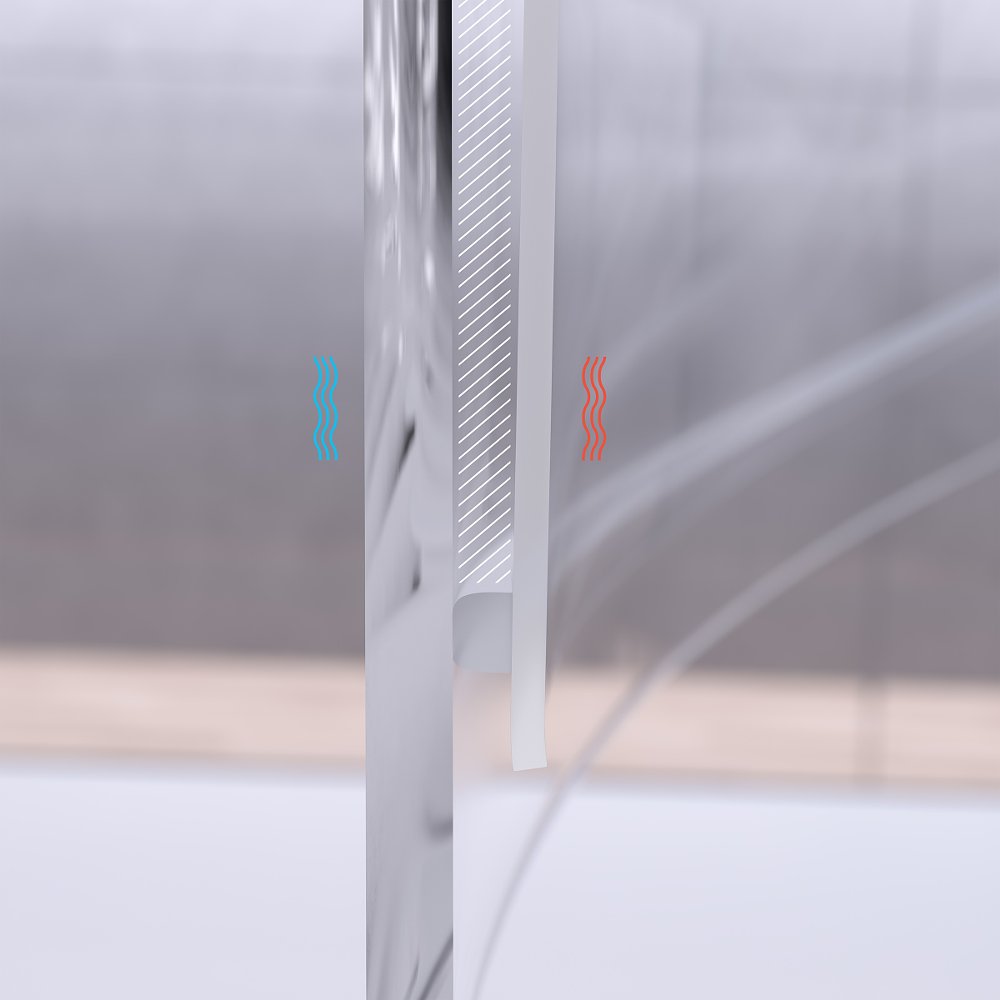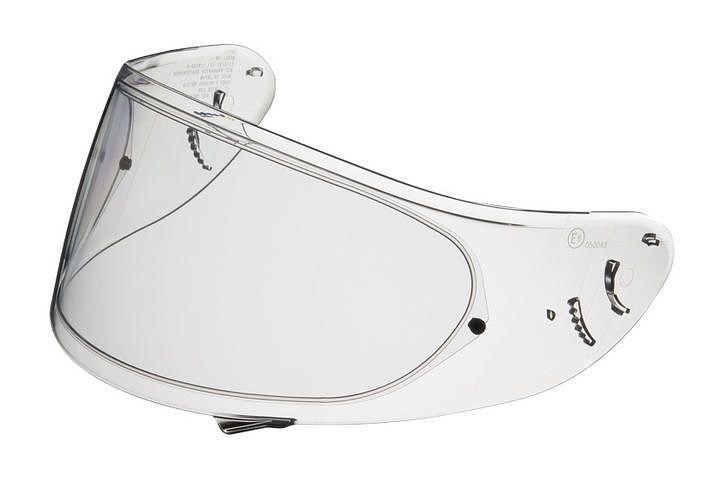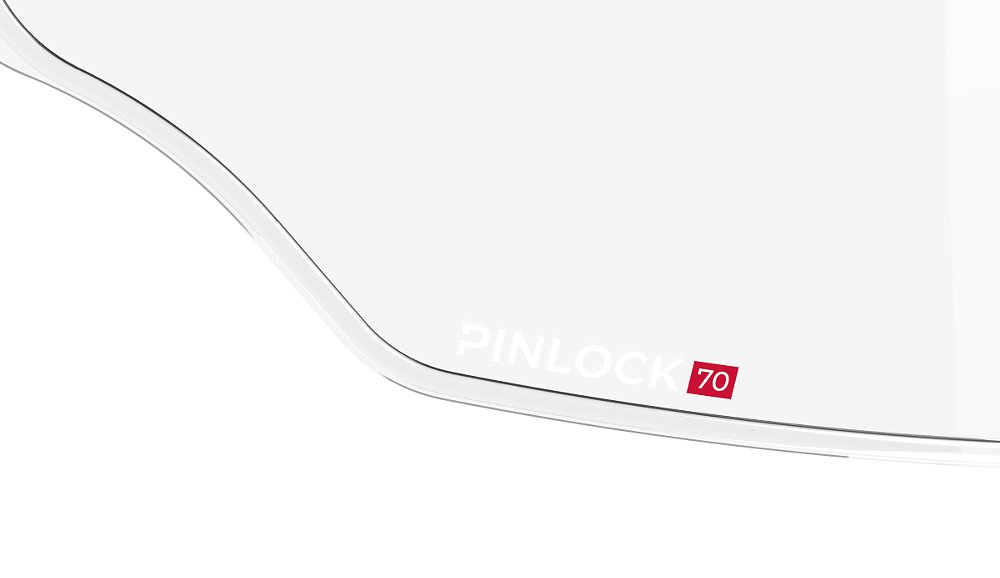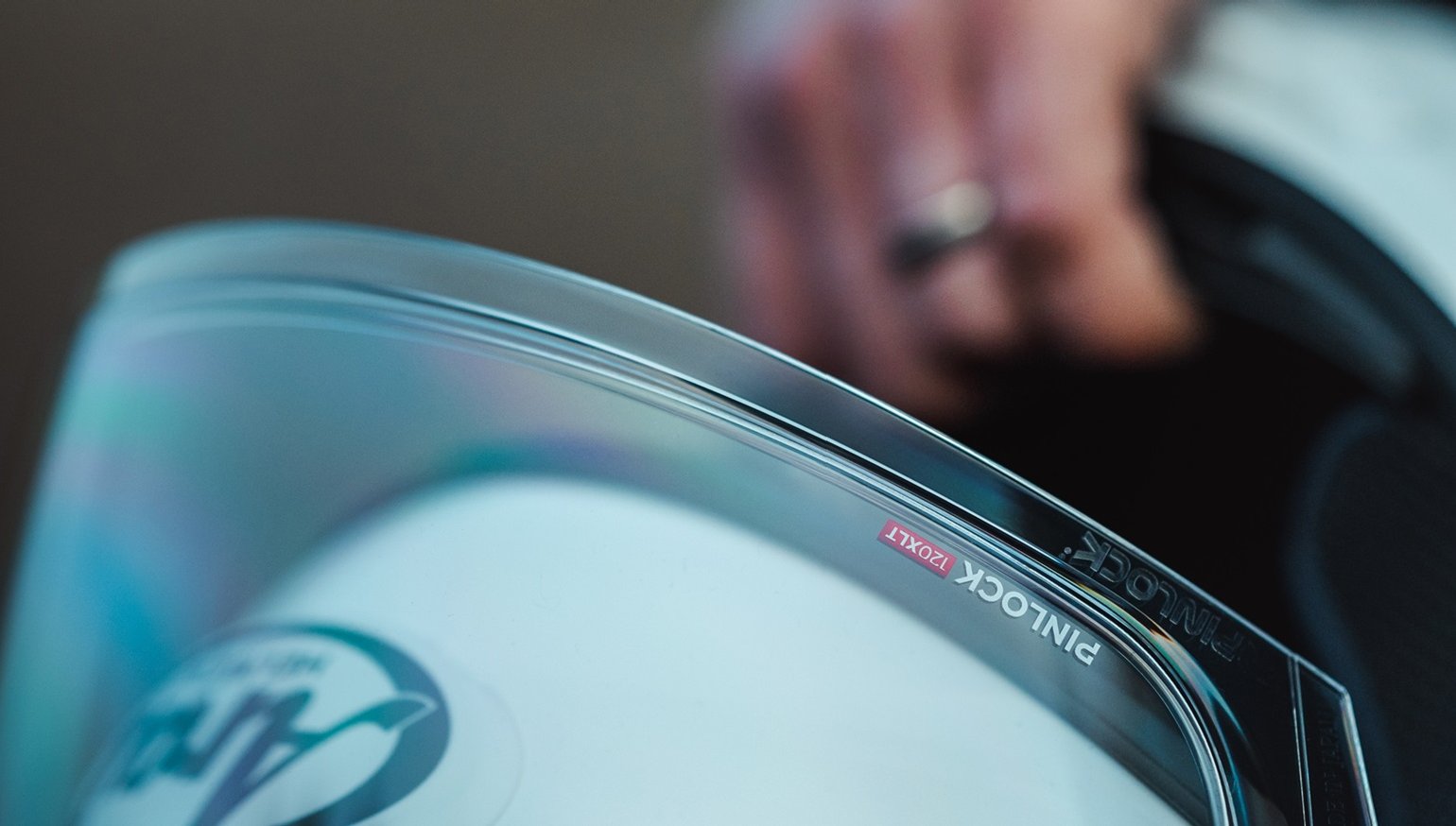I've worn full-face helmets for most of my riding life, and every one of the damned things fogged the shield in rain or cold weather — sometimes even in good weather.
I tried everything. I drilled holes in the shield, rode with it partially open, applied layer after layer of treatments, potions, salves, and root vegetables — I even tried something called Cat Crap — and none of it worked.
Then I started using a Pinlock insert and I've been using them for years, ever since.
The problem and a solution
When your warm breath hits your helmet's cold face shield, the moisture in your breath condenses and fogs the shield. This phenomenon is well known to anyone who rides in rainy or cold weather, or who wears a helmet that fits tightly enough to prevent much airflow around their face. You can crack the shield open to get air moving around behind it but that works only so well, and it doesn't often work at all in the rain. Chin vents help, depending on the helmet, but in my experience only when you're moving briskly down the road, and not at all behind a tall windscreen.

What all of those magical anti-fog treatments that I tried were shooting for was stopping moisture from beading up on the inside of the shield. Pinlock took a different approach to preventing fogging. Rather than treat the shield, Pinlock devised a way to separate the cold shield and your warm breath with an insert the fits on the inside of the shield.
The Pinlock insert is made of a material that absorbs moisture and keeps it from condensing. There's also a seal around the edge of the side of the insert that presses against your helmet's faceshield. That seal allows the insert to trap a thin layer of insulating air between the shield and the insert. Think of it as a double-pane window for your helmet.

Pinlock inserts are shield-specific and are held in place by small pins in the shield. The oval-shaped insert has slots in the ends that line up with the pins on the faceshield. Just snap it in place and tension keeps the seal pressed against your faceshield. Because the Pinlock insert grows slightly as it absorbs moisture and shrinks as it dries, in some cases the pins are eccentric, so you can rotate them to tighten the fit of the silicone seal to the shield as expansion and contraction occurs.
There are three levels of resistance to fogging. The 30 is designed for commuting and casual riding, and is the least moisture absorbent. The 70 is a step up, with better moisture absorption, and the 120XLT is the big daddy, made from the same material used by MotoGP and Formula 1 racers. Any of the three levels might be included with a helmet but you can buy a higher level separately. The 30 comes in clear only and has a more limited field of vision than the 70 and 120XLT, which come in clear, smoke, yellow, or photochromic. Shoei helmets come with a Pinlock marked Evo, but it's really a 120XLT using an alias.

A clear Pinlock insert in a clear shield reduces light transmission by about 20 percent so Pinlock recommends its inserts for daytime riding only.
Care of a Pinlock insert
A Pinlock can become so saturated with water that it won't absorb any more. In that case, it needs to be removed and allowed to air dry. It should be removed occasionally, in any case, to keep the seal from sticking to the shield. If it gets dirty (and it will eventually as dust sticks to its moist side), clean it with warm water and a mild soap — no abrasives, no cloths or wipes — and let it air dry. The material the insert is made from is a lot easier to scratch than the hard plastic of the shield, so avoid wiping anything off it with your finger or a tissue. Just clean it the right way.

Depending on how much you ride and the conditions in which you ride, you might eventually notice the Pinlock isn't working as well as it used to. I've had a couple of Pinlocks die peaceful deaths, but only after years of service here in Oregon, which is known for its rainy and cold winters (and springs and falls). Recently, I bought a new Shoei RF-SR and it came with an Evo Pinlock. The helmet fits very close to my face and without the insert I was blinded by fog by the end of the driveway. With the Pinlock, I close the shield as I roll out of the garage and don't open it until I get to my destination.
Based on my past experience, I expect this Pinlock to keep my helmet fog-free for a long time. But even if I do have to replace it, I'll consider it a cheap price to pay for clearer vision and safer riding.









